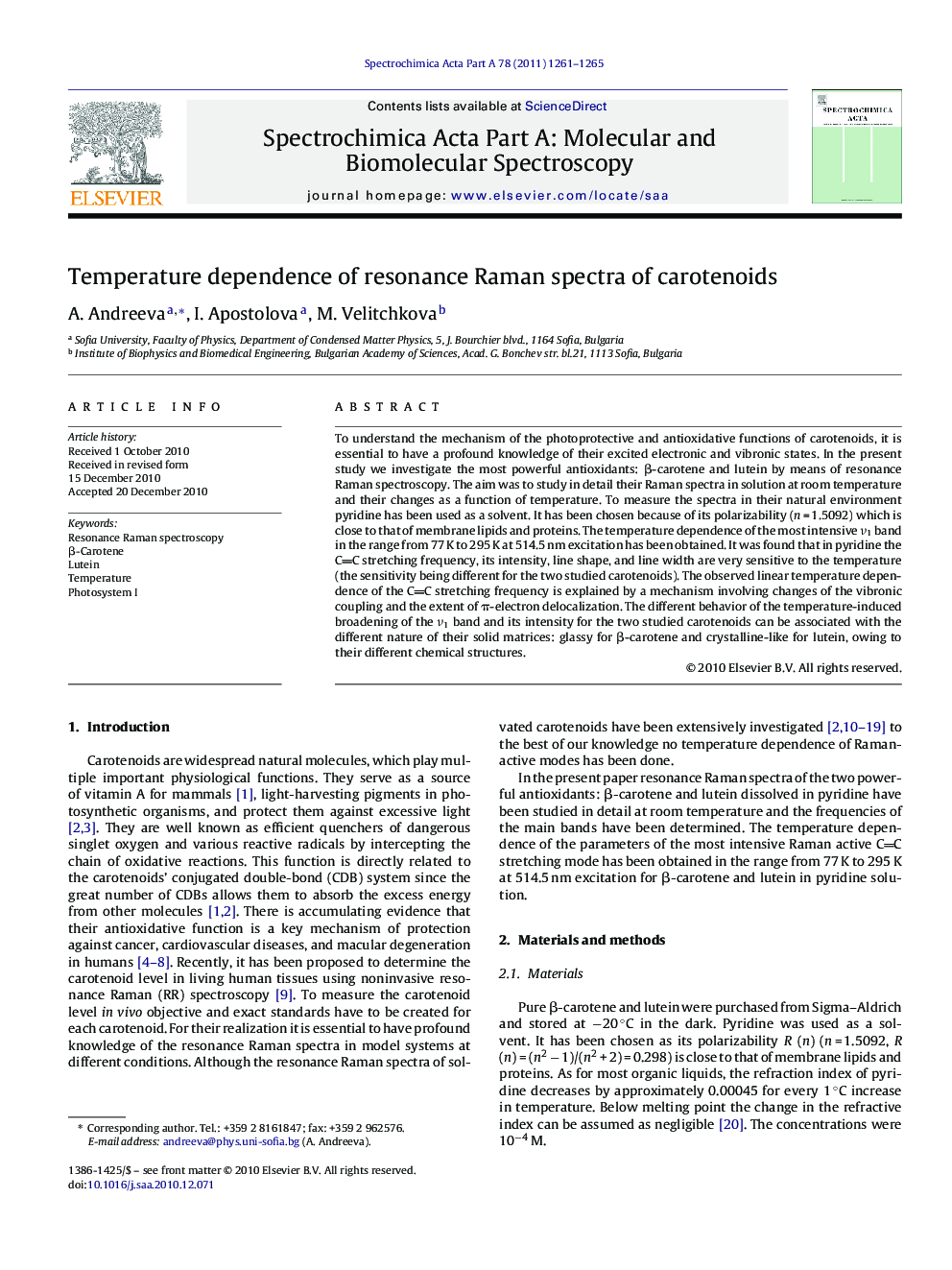| Article ID | Journal | Published Year | Pages | File Type |
|---|---|---|---|---|
| 1231694 | Spectrochimica Acta Part A: Molecular and Biomolecular Spectroscopy | 2011 | 5 Pages |
To understand the mechanism of the photoprotective and antioxidative functions of carotenoids, it is essential to have a profound knowledge of their excited electronic and vibronic states. In the present study we investigate the most powerful antioxidants: β-carotene and lutein by means of resonance Raman spectroscopy. The aim was to study in detail their Raman spectra in solution at room temperature and their changes as a function of temperature. To measure the spectra in their natural environment pyridine has been used as a solvent. It has been chosen because of its polarizability (n = 1.5092) which is close to that of membrane lipids and proteins. The temperature dependence of the most intensive ν1 band in the range from 77 K to 295 K at 514.5 nm excitation has been obtained. It was found that in pyridine the CC stretching frequency, its intensity, line shape, and line width are very sensitive to the temperature (the sensitivity being different for the two studied carotenoids). The observed linear temperature dependence of the CC stretching frequency is explained by a mechanism involving changes of the vibronic coupling and the extent of π-electron delocalization. The different behavior of the temperature-induced broadening of the ν1 band and its intensity for the two studied carotenoids can be associated with the different nature of their solid matrices: glassy for β-carotene and crystalline-like for lutein, owing to their different chemical structures.
